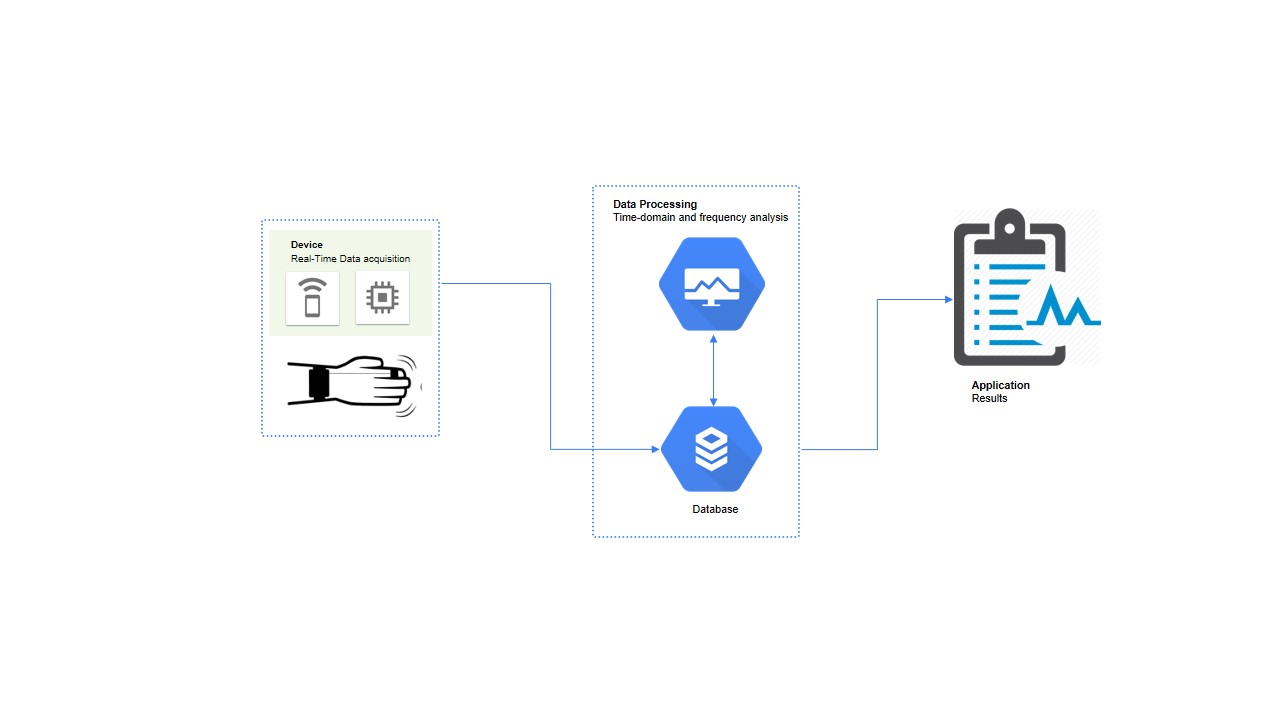Session Information
Date: Tuesday, September 24, 2019
Session Title: Classification of Movement Disorders
Session Time: 1:45pm-3:15pm
Location: Les Muses Terrace, Level 3
Objective: The aim of this paper is to present a study of a device to measure and algorithms to classify tremors in Parkinson’s disease (PD) in order to aid both the early and the confirmatory diagnosis of the disease, attributing values to motor symptoms and using the concept of Internet of Things Technology.
Background: Several studies showed that wearable inertial sensors used for assessing PD motor symptoms could provide a quantitative and reliable tool for monitoring the motor performance [1-5]. Notwithstanding, there is no commonly used system capable to register and evaluate the tremor data and to make the connected care for PD.
Method: The device is composed of a 6 DoF inertial sensor placed on the index finger of test subjects. This device was used for measuring the amplitude and frequencies of the subjects’ hand tremors. The device, then, sent the collected data via WiFi through I2C protocol communication. All signals were directly sent to a database in a PC by a local internet connection created on this device. The goal was that the test subject performs four MDS-UPDRS tasks while the devices captured hand-movement information during the clinical assessment as described in MDS-UPDRS scale. We used the Fast Fourier Transform of the test tremor as a mean to identify its most relevant frequencies [5-6] it was also used passband and smooth filtering so that the signal is presented in a clear way for the diagnoser. In order to categorize the tremors – as in whether they are of PD origin or not – by the implementation of a statistical algorithm classification.
Results: The preliminary results show that the proposed system is capable of collecting and processing signal tremor data. Furthermore, the system’s application interface shows the objectively-measured characteristics of the hand tremor and classify it whether it is PD related or not
Conclusion: The preliminary results provide important indication that the system can transform the way technology is used for PD evaluation, since it is an integrated device with a user-friendly interface for the diagnoser to use. Moreover, this is a low-cost device with an 6-hours long battery autonomy which is capable of performing objective, quantitative measurements of hand tremors. As such, we hope that its implementation as an auxiliary tool for the neurologist’s diagnoses of PD helps make them more precise and less susceptible to subjective errors
References: [1] DAI, Houde; ZHANG, Pengyue; LUETH, Tim. Quantitative Assessment of Parkinsonian Tremor Based on an Inertial Measurement Unit. Sensors, [s.l.], v. 15, n. 10, p.25055-25071, 29 set. 2015. MDPI AG. http://dx.doi.org/10.3390/s151025055. [2] MAETZLER, Walter et al. Quantitative wearable sensors for objective assessment of Parkinson’s disease. Movement Disorders, [s.l.], v. 28, n. 12, p.1628-1637, 12 set. 2013. Wiley. http://dx.doi.org/10.1002/mds.25628 [3]ULLAH, Sana et al. A Comprehensive Survey of Wireless Body Area Networks. Journal Of Medical Systems, [s.l.], v. 36, n. 3, p.1065-1094, 19 ago. 2010. Springer Nature. http://dx.doi.org/10.1007/s10916-010-9571-3. [4] ZHOU, Y. et al. The measurement and analysis of Parkinsonian hand tremor. 2016 Ieee-embs International Conference On Biomedical And Health Informatics (bhi), [s.l.], p.414-417, fev. 2016. IEEE. http://dx.doi.org/10.1109/bhi.2016.7455922. [5] HOFFMAN, J. D.; MCNAMES, J.. Objective measure of upper extremity motor impairment in Parkinson’s disease with inertial sensors. 2011 Annual International Conference Of The Ieee Engineering In Medicine And Biology Society, [s.l.], p.4378-4381, ago. 2011. IEEE. http://dx.doi.org/10.1109/iembs.2011.6091086. [6] BIASE, Lazzaro di et al. Quantitative Analysis of Bradykinesia and Rigidity in Parkinson’s Disease. Frontiers In Neurology, [s.l.], v. 9, p.1-12, 6 mar. 2018. Frontiers Media SA. http://dx.doi.org/10.3389/fneur.2018.00121.
To cite this abstract in AMA style:
A. Delatorre, J. Marques. MEMs-based Measurement and Classification System of Tremors in Parkinson Disease using MDS-UPDRS Scale as a Parameter [abstract]. Mov Disord. 2019; 34 (suppl 2). https://www.mdsabstracts.org/abstract/mems-based-measurement-and-classification-system-of-tremors-in-parkinson-disease-using-mds-updrs-scale-as-a-parameter/. Accessed December 19, 2025.« Back to 2019 International Congress
MDS Abstracts - https://www.mdsabstracts.org/abstract/mems-based-measurement-and-classification-system-of-tremors-in-parkinson-disease-using-mds-updrs-scale-as-a-parameter/

